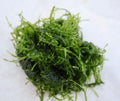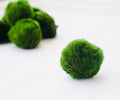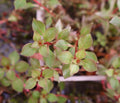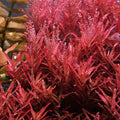Top 5 Fish Tank Algae Removal Methods
Algae is a naturally occurring component of the aquarium ecosystem because it feeds algae-eating fish and crustaceans and helps to rid the water of harmful waste compounds. Since too much algae may impede your view of the fish tank and hinder good plant development, most people see it as an unwanted visitor. Let's discuss five quick ways to remove algae from your aquarium's ornaments and walls.
1. Manually Remove Algae Using Tools
The first method on our list is to physically remove the algae with your own two hands since it yields results quickly and with little waiting, so let's speak about the best instruments to have on hand. Using an algae scrubber is the simplest way to remove algae from your aquarium's walls if it is covering them and making it difficult to see your fish.This soft sponge won't damage your glass or acrylic tanks since it is composed of non-toxic melamine foam. Use a Glass Cleaner and the corresponding scraper blades to attempt to remove difficult algae, such as green spot algae, if you're having problems with manual scraping. When it comes to tank maintenance, these glass-safe blades effortlessly cut through green spot algae like a hot knife through butter, saving you a ton of time and effort.
Easy-to-reach locations, aquarium ornaments, hardscapes, and even plant leaves may all be cleaned with a basic toothbrush. By catching the algae strands with the toothbrush bristles and twisting the toothbrush until the algae twists up like spaghetti on a fork, you can remove certain varieties of hair algae. Finally, suction the gravel or sand using an aquarium siphon if you see brown diatom algae or blue-green algae beginning to cover the substrate.
2. Ask Animals That Eat Algae for Assistance
Many individuals search for an algae eater to alleviate all their troubles when algae growth begins to take over a fish tank. Because each algae-eating species only consumes certain types of algae and because they may not be able to thoroughly clean your whole aquarium, we have ranked them second on our list. They are a useful second line of defense, however, and may help you in your battle against algae. Our preferred nano tank inhabitants are schools of otocinclus catfish, nerite snails, and amano shrimp. Purchase several bristlenose plecos for bigger aquariums to cover more surface area.
3. Eliminate Extra Organics from the Tank
The nitrogen molecules found in fish waste, diseased leaves, uneaten fish food, and other organic components are easily ingested by algae because they are exceedingly adaptive. Eliminating any sources of nutrients that algae may use is beneficial if your aquarium is still relatively young and hasn't established itself effectively. Whenever you do a water change on a planted tank, use a pair of scissors to snip off any dead or algae-covered leaves. If you notice that the fish aren't eating all you offer them within a few minutes, feed them less and use a siphon to suction away the decaying muck from the bottom.
Additionally, if the current is too sluggish or there are several huge ornaments and hardscapes impeding the path, pockets of detritus, or "dead zones," may emerge in the aquarium, which are favorable environments for the growth of blue-green algae. By rearranging the decorations, adding substrate to the spaces between the hardscape, or installing a more powerful filter or circulation pump, you may increase the water flow.
4. Consistently balance nutrients and lighting
In the end, dealing with the underlying issue that is causing the algae to outcompete your plants is the most efficient approach to getting rid of it. Algae photosynthesizes and grows using the same resources (such as sunlight and nutrients) that plants do, and if there is too much or too little of any of these essential ingredients, algae may exploit them at an unmanageable pace.
We advise utilizing an outlet timer to turn on your light for around 6 to 8 hours each day (as a starting point) in order to balance your planted tank, and then gradually adjusting your nutritional levels as necessary. Change the water to reduce the quantity of nitrogen waste if the nitrate level is more than 50 ppm. If the nitrate level is below 20 ppm, add a fertilizer to the tank until the water is at the desired level. Wait two to three weeks between changing the lighting or fertilizer levels so you can see the effects on your plants and make adjustments. Algae will always be there, so the objective is to reduce it to the point where it is barely perceptible.
5. Use an algae inhibitor as a treatment.
Finding a chemical treatment that is strong enough to kill the algae without endangering the fish tank's inhabitants and plants is difficult when it comes to algae control. Although it is often marketed as an aquarium plant fertilizer, liquid carbon is really an algae inhibitor that is known to suppress the growth of algae.
Chemical remedies are included last since, in our opinion, they are most beneficial after you have balanced the lighting and nutrients in your planted aquarium. The algae will keep growing if you attempt to apply algaecides in your tank without doing any of the preceding four stages, and the chemicals will have little to no effect. Read our post on the six most prevalent forms of algae for additional details on how to prevent algae development.
















